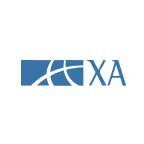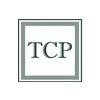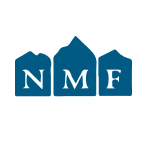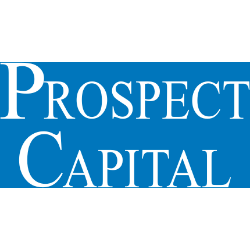CSWC

Capital Southwest Corporation
CSWC
(2.5)22,37 USD
4.79% ROA
9.68% ROE
15.67x PER
1.183.958.934,00 USD
94.66% DER
10.02% Yield
44.43% NPM
Capital Southwest Corporation Stock Analysis
Capital Southwest Corporation Fundamental Analysis
Fundamental analysis in stock investing is like studying the foundation of a house before buying it. It involves looking at a company's financial health, like its earnings, assets, and debts, to determine if it's a good investment based on its fundamental strength and potential for growth.
| # | Analysis | Rating |
|---|---|---|
| 1 |
DER
The stock has a low debt to equity ratio (19%), which means it has a small amount of debt compared to the ownership it holds |
|
| 2 |
Assets Growth
With continuous growth in revenue over the last five years, this company has proven to be a lucrative investment option, showcasing its strong financial performance. |
|
| 3 |
Dividend
The company's consistent dividend payouts over the past five years exemplify its strong commitment to providing shareholders with reliable returns, making it an attractive investment option. |
|
| 4 |
ROE
ROE in an average range (11.8%) suggests satisfactory profitability and decent utilization of shareholders' equity. |
|
| 5 |
ROA
The stock's ROA (5.09%) shows that it's doing a pretty good job at making money from its assets, making it a solid choice to invest and earn steady profits. |
|
| 6 |
PBV
The stock's PBV ratio (1.33x) reflects a fair valuation, making it an attractive option for investors seeking balanced opportunities. |
|
| 7 |
Graham Number
The Graham number calculation reveals that this company's stock price is potentially underestimated, implying that it may be a promising investment option. |
|
| 8 |
Revenue Growth
Company has experienced no growth in revenue over the past three years, suggesting limited profitability and making it a less desirable investment opportunity. |
|
| 9 |
Net Profit Growth
This company's net profit has remained stagnant over the past five years, indicating a lack of growth and making it a less favorable investment option. |
|
| 10 |
Dividend Growth
The company's dividend growth has remained flat for the past three years, offering no indication of improved returns and making it a less advantageous investment opportunity. |
|
| 11 |
Buffet Intrinsic Value
The company's stock presents a potential concern as it appears overvalued (14) by Warren Buffett's formula, indicating that its market price exceeds its estimated intrinsic value. |
Capital Southwest Corporation Technical Analysis
Technical analysis in stock investing is like reading the patterns on a weather map to predict future weather conditions. It involves studying past stock price movements and trading volumes to make predictions about where a stock's price might go next, without necessarily looking at the company's financial health.
| # | Analysis | Recommendation |
|---|---|---|
| 1 | Awesome Oscillator | Hold |
| 2 | MACD | Buy |
| 3 | RSI | Hold |
| 4 | Stoch RSI | Sell |
Capital Southwest Corporation Price Chart
Financial Statements
Financial statements are like report cards for companies. They show how much money a company makes (income statement), what it owns and owes (balance sheet), and where it spends its money (cash flow statement), helping stock investors understand if a company is healthy and worth investing in.
Income Statements
An income statement for a company is like a scoreboard for its profits and losses. It shows how much money the company made (revenue) and how much it spent to make that money (expenses), helping stock investors see if a company is making a profit or not.
Revenue in stock investing is the total amount of money a company earns from its sales, and it's a key factor that investors consider to assess a company's financial performance and growth potential.
| Year | Revenue | Growth |
|---|---|---|
| 1996 | 318.305 | |
| 1997 | 737.135 | 56.82% |
| 1998 | 1.598.062 | 53.87% |
| 1999 | 891.494 | -79.26% |
| 2000 | 427.890 | -108.35% |
| 2001 | 2.884.137 | 85.16% |
| 2002 | 3.217.182 | 10.35% |
| 2003 | 3.584.619 | 10.25% |
| 2004 | 87.057.166 | 95.88% |
| 2005 | 16.251.432 | -435.69% |
| 2006 | 98.204.192 | 83.45% |
| 2007 | 6.512.036 | -1408.04% |
| 2008 | 6.794.683 | 4.16% |
| 2009 | 13.985.132 | 51.41% |
| 2010 | 6.109.306 | -128.92% |
| 2011 | 7.568.000 | 19.27% |
| 2012 | 9.334.000 | 18.92% |
| 2013 | 115.635.000 | 91.93% |
| 2014 | 119.723.000 | 3.41% |
| 2015 | 66.115.000 | -81.08% |
| 2016 | 14.546.000 | -354.52% |
| 2017 | 38.394.000 | 62.11% |
| 2018 | 53.192.000 | 27.82% |
| 2019 | 48.873.000 | -8.84% |
| 2020 | 62.039.000 | 21.22% |
| 2021 | 72.576.000 | 14.52% |
| 2022 | 83.002.000 | 12.56% |
| 2023 | 61.453.000 | -35.07% |
| 2024 | 171.108.000 | 64.09% |
| 2024 | 178.135.000 | 3.94% |
| 2025 | 208.260.000 | 14.47% |
Research and Development Expenses are the costs a company incurs to create and improve its products or services, which can be important for investors to evaluate a company's innovation and potential for future growth.
| Year | Research and Development Expenses | Growth |
|---|---|---|
| 1996 | 0 | |
| 1997 | 0 | 0% |
| 1998 | 0 | 0% |
| 1999 | 0 | 0% |
| 2000 | 0 | 0% |
| 2001 | 0 | 0% |
| 2002 | 0 | 0% |
| 2003 | 0 | 0% |
| 2004 | 0 | 0% |
| 2005 | 0 | 0% |
| 2006 | 0 | 0% |
| 2007 | 0 | 0% |
| 2008 | 0 | 0% |
| 2009 | 0 | 0% |
| 2010 | 0 | 0% |
| 2011 | 0 | 0% |
| 2012 | 0 | 0% |
| 2013 | 0 | 0% |
| 2014 | 0 | 0% |
| 2015 | 0 | 0% |
| 2016 | 0 | 0% |
| 2017 | 1 | 0% |
| 2018 | 1 | 100% |
| 2019 | 0 | 0% |
| 2020 | 0 | 0% |
| 2021 | 1 | 0% |
| 2022 | 1 | 0% |
| 2023 | 0 | 0% |
| 2024 | 0 | 0% |
| 2024 | 0 | 0% |
| 2025 | 0 | 0% |
General and Administrative Expenses are the costs a company incurs to run its day-to-day operations, such as office rent, salaries, and utilities, which investors consider to understand a company's overall efficiency and management effectiveness.
| Year | General and Administrative Expenses | Growth |
|---|---|---|
| 1996 | 1.112.640 | |
| 1997 | 1.147.294 | 3.02% |
| 1998 | 1.206.478 | 4.91% |
| 1999 | 1.109.699 | -8.72% |
| 2000 | 804.933 | -37.86% |
| 2001 | 850.959 | 5.41% |
| 2002 | 894.612 | 4.88% |
| 2003 | 911.671 | 1.87% |
| 2004 | 1.269.991 | 28.21% |
| 2005 | 1.387.382 | 8.46% |
| 2006 | 1.328.331 | -4.45% |
| 2007 | 1.356.062 | 2.04% |
| 2008 | 1.619.008 | 16.24% |
| 2009 | 2.294.187 | 29.43% |
| 2010 | 2.469.962 | 7.12% |
| 2011 | 3.755.000 | 34.22% |
| 2012 | 4.403.000 | 14.72% |
| 2013 | 2.744.000 | -60.46% |
| 2014 | 2.787.000 | 1.54% |
| 2015 | 5.963.000 | 53.26% |
| 2016 | 11.709.000 | 49.07% |
| 2017 | 4.435.000 | -164.01% |
| 2018 | 4.421.000 | -0.32% |
| 2019 | 4.800.000 | 7.9% |
| 2020 | 5.603.000 | 14.33% |
| 2021 | 5.177.000 | -8.23% |
| 2022 | 6.566.000 | 21.15% |
| 2023 | 7.812.000 | 15.95% |
| 2024 | 18.596.000 | 57.99% |
| 2024 | 8.949.000 | -107.8% |
| 2025 | 11.724.000 | 23.67% |
EBITDA stands for Earnings Before Interest, Taxes, Depreciation, and Amortization. It is a measure that helps stock investors analyze a company's profitability by looking at its earnings without considering certain expenses. This helps to get a clearer picture of the company's financial performance and its ability to generate cash flow.
| Year | EBITDA | Growth |
|---|---|---|
| 1996 | 0 | |
| 1997 | 0 | 0% |
| 1998 | 0 | 0% |
| 1999 | 0 | 0% |
| 2000 | 0 | 0% |
| 2001 | 0 | 0% |
| 2002 | 0 | 0% |
| 2003 | 0 | 0% |
| 2004 | 0 | 0% |
| 2005 | 0 | 0% |
| 2006 | 0 | 0% |
| 2007 | 0 | 0% |
| 2008 | 0 | 0% |
| 2009 | 0 | 0% |
| 2010 | 130 | 100% |
| 2011 | 0 | 0% |
| 2012 | 0 | 0% |
| 2013 | 0 | 0% |
| 2014 | 4.178.000 | 100% |
| 2015 | -301.000 | 1488.04% |
| 2016 | 0 | 0% |
| 2017 | 26.035.000 | 100% |
| 2018 | 40.296.000 | 35.39% |
| 2019 | 38.329.000 | -5.13% |
| 2020 | -1.365.000 | 2907.99% |
| 2021 | 54.021.000 | 102.53% |
| 2022 | 65.456.000 | 17.47% |
| 2023 | 71.689.000 | 8.69% |
| 2024 | 105.644.000 | 32.14% |
| 2024 | 158.341.000 | 33.28% |
| 2025 | 119.648.000 | -32.34% |
Gross profit is the money a company makes from selling its products or services after subtracting the cost of producing or providing them, and it is an important measure for investors to understand a company's profitability.
| Year | Gross Profit | Growth |
|---|---|---|
| 1996 | 318.305 | |
| 1997 | 737.135 | 56.82% |
| 1998 | 1.598.062 | 53.87% |
| 1999 | 891.494 | -79.26% |
| 2000 | 427.890 | -108.35% |
| 2001 | 2.884.137 | 85.16% |
| 2002 | 3.217.182 | 10.35% |
| 2003 | 3.584.619 | 10.25% |
| 2004 | 87.057.166 | 95.88% |
| 2005 | 16.251.432 | -435.69% |
| 2006 | 98.204.192 | 83.45% |
| 2007 | 6.512.036 | -1408.04% |
| 2008 | 6.794.683 | 4.16% |
| 2009 | 13.985.132 | 51.41% |
| 2010 | 6.109.306 | -128.92% |
| 2011 | 6.504.000 | 6.07% |
| 2012 | 8.055.000 | 19.26% |
| 2013 | 114.024.000 | 92.94% |
| 2014 | 117.926.000 | 3.31% |
| 2015 | 63.515.000 | -85.67% |
| 2016 | 14.546.000 | -336.65% |
| 2017 | 37.935.000 | 61.66% |
| 2018 | 52.265.000 | 27.42% |
| 2019 | 47.480.000 | -10.08% |
| 2020 | -236.000 | 20218.64% |
| 2021 | 70.609.000 | 100.33% |
| 2022 | 80.772.000 | 12.58% |
| 2023 | 58.703.000 | -37.59% |
| 2024 | 171.108.000 | 65.69% |
| 2024 | 178.135.000 | 3.94% |
| 2025 | 203.144.000 | 12.31% |
Net income in stock investing is like the money a company actually gets to keep as profit after paying all its bills, and it's an important measure to understand how well a company is doing financially.
| Year | Net Profit | Growth |
|---|---|---|
| 1996 | 52.774.610 | |
| 1997 | 32.184.598 | -63.97% |
| 1998 | 78.598.959 | 59.05% |
| 1999 | -38.475.878 | 304.28% |
| 2000 | -17.066.968 | -125.44% |
| 2001 | -7.978.322 | -113.92% |
| 2002 | 25.678.310 | 131.07% |
| 2003 | -41.726.636 | 161.54% |
| 2004 | 85.467.506 | 148.82% |
| 2005 | 14.224.788 | -500.84% |
| 2006 | 96.190.433 | 85.21% |
| 2007 | 116.910.949 | 17.72% |
| 2008 | -139.014.474 | 184.1% |
| 2009 | -138.307.446 | -0.51% |
| 2010 | 73.541.000 | 288.07% |
| 2011 | 53.688.000 | -36.98% |
| 2012 | 93.006.000 | 42.27% |
| 2013 | 107.832.000 | 13.75% |
| 2014 | 112.010.000 | 3.73% |
| 2015 | 53.442.000 | -109.59% |
| 2016 | -5.400.000 | 1089.67% |
| 2017 | 23.474.000 | 123% |
| 2018 | 39.307.000 | 40.28% |
| 2019 | 33.058.000 | -18.9% |
| 2020 | -22.351.000 | 247.9% |
| 2021 | 50.883.000 | 143.93% |
| 2022 | 42.815.000 | -18.84% |
| 2023 | 33.093.000 | -29.38% |
| 2024 | 90.496.000 | 63.43% |
| 2024 | 83.389.000 | -8.52% |
| 2025 | 56.140.000 | -48.54% |
EPS, or earnings per share, is a measure that shows how much profit a company has earned for each outstanding share of its stock, and it is important for stock investors as it helps understand the profitability of a company and compare it with other companies in the market.
| Year | Earning per Share (EPS) | Growth |
|---|---|---|
| 1996 | 4 | |
| 1997 | 2 | -50% |
| 1998 | 5 | 60% |
| 1999 | -3 | 350% |
| 2000 | -1 | -100% |
| 2001 | -1 | 0% |
| 2002 | 2 | 100% |
| 2003 | -3 | 150% |
| 2004 | 6 | 140% |
| 2005 | 1 | 0% |
| 2006 | 6 | 100% |
| 2007 | 8 | 14.29% |
| 2008 | -9 | 187.5% |
| 2009 | -9 | 11.11% |
| 2010 | 5 | 325% |
| 2011 | 4 | -33.33% |
| 2012 | 6 | 50% |
| 2013 | 7 | 0% |
| 2014 | 7 | 14.29% |
| 2015 | 3 | -133.33% |
| 2016 | 0 | 0% |
| 2017 | 1 | 100% |
| 2018 | 2 | 50% |
| 2019 | 2 | -100% |
| 2020 | -1 | 200% |
| 2021 | 3 | 150% |
| 2022 | 2 | -100% |
| 2023 | 1 | 0% |
| 2024 | 3 | 50% |
| 2024 | 2 | 0% |
| 2025 | 1 | -100% |
Cashflow Statements
Cashflow statements show the movement of money in and out of a company, helping stock investors understand how much money a company makes and spends. By examining cashflow statements, investors can assess if a company is generating enough cash to pay its bills, invest in growth, and provide returns to stockholders.
Free cash flow is the leftover cash that a company generates after covering its operating expenses and capital expenditures, which is important for stock investors as it shows how much money a company has available to invest in growth, pay dividends, or reduce debt.
| Year | Free Cashflow | Growth |
|---|---|---|
| 1996 | 2.787.951 | |
| 1997 | 2.298.913 | -21.27% |
| 1998 | 2.532.688 | 9.23% |
| 1999 | 1.479.041 | -71.24% |
| 2000 | 1.485.385 | 0.43% |
| 2001 | 1.164.785 | -27.52% |
| 2002 | -10.383 | 11318.19% |
| 2003 | 3.231.515 | 100.32% |
| 2004 | 9.311.539 | 65.3% |
| 2005 | 4.768.370 | -95.28% |
| 2006 | 13.505.162 | 64.69% |
| 2007 | 35.868.637 | 62.35% |
| 2008 | -5.414.544 | 762.45% |
| 2009 | 17.777.027 | 130.46% |
| 2010 | -6.820.409 | 360.64% |
| 2011 | 68.231.000 | 110% |
| 2012 | 23.549.000 | -189.74% |
| 2013 | 94.342.000 | 75.04% |
| 2014 | 4.626.000 | -1939.39% |
| 2015 | 139.914.000 | 96.69% |
| 2016 | -111.506.000 | 225.48% |
| 2017 | -89.559.000 | -24.51% |
| 2018 | -63.863.000 | -40.24% |
| 2019 | -94.706.000 | 32.57% |
| 2020 | -47.947.000 | -97.52% |
| 2021 | -68.252.000 | 29.75% |
| 2022 | -184.670.000 | 63.04% |
| 2023 | -227.381.000 | 18.78% |
| 2024 | 0 | 0% |
| 2024 | 100.639.000 | 100% |
| 2025 | 26.954.000 | -273.37% |
Operating cash flow represents the cash generated or consumed by a company's day-to-day operations, excluding external investing or financing activities, and is crucial for stock investors as it shows how much cash a company is generating from its core business operations.
| Year | Operating Cashflow | Growth |
|---|---|---|
| 1996 | 2.787.951 | |
| 1997 | 2.298.913 | -21.27% |
| 1998 | 2.532.688 | 9.23% |
| 1999 | 1.479.041 | -71.24% |
| 2000 | 1.485.385 | 0.43% |
| 2001 | 1.164.785 | -27.52% |
| 2002 | -10.383 | 11318.19% |
| 2003 | 3.231.515 | 100.32% |
| 2004 | 9.311.539 | 65.3% |
| 2005 | 4.768.370 | -95.28% |
| 2006 | 13.505.162 | 64.69% |
| 2007 | 35.868.637 | 62.35% |
| 2008 | -5.414.544 | 762.45% |
| 2009 | 17.777.027 | 130.46% |
| 2010 | -6.820.409 | 360.64% |
| 2011 | 68.231.000 | 110% |
| 2012 | 23.549.000 | -189.74% |
| 2013 | 94.342.000 | 75.04% |
| 2014 | 4.626.000 | -1939.39% |
| 2015 | 139.914.000 | 96.69% |
| 2016 | -111.506.000 | 225.48% |
| 2017 | -89.559.000 | -24.51% |
| 2018 | -63.863.000 | -40.24% |
| 2019 | -94.706.000 | 32.57% |
| 2020 | -47.947.000 | -97.52% |
| 2021 | -68.252.000 | 29.75% |
| 2022 | -182.675.000 | 62.64% |
| 2023 | -227.100.000 | 19.56% |
| 2024 | 0 | 0% |
| 2024 | 100.652.000 | 100% |
| 2025 | 26.979.000 | -273.08% |
Capex, short for capital expenditures, refers to the money a company spends on acquiring or upgrading tangible assets like buildings, equipment, or technology, which is important for stock investors as it indicates how much a company is investing in its infrastructure to support future growth and profitability.
| Year | Capital Expenditure | Growth |
|---|---|---|
| 1996 | 0 | |
| 1997 | 0 | 0% |
| 1998 | 0 | 0% |
| 1999 | 0 | 0% |
| 2000 | 0 | 0% |
| 2001 | 0 | 0% |
| 2002 | 0 | 0% |
| 2003 | 0 | 0% |
| 2004 | 0 | 0% |
| 2005 | 0 | 0% |
| 2006 | 0 | 0% |
| 2007 | 0 | 0% |
| 2008 | 0 | 0% |
| 2009 | 0 | 0% |
| 2010 | 0 | 0% |
| 2011 | 0 | 0% |
| 2012 | 0 | 0% |
| 2013 | 0 | 0% |
| 2014 | 0 | 0% |
| 2015 | 0 | 0% |
| 2016 | 0 | 0% |
| 2017 | 0 | 0% |
| 2018 | 0 | 0% |
| 2019 | 0 | 0% |
| 2020 | 0 | 0% |
| 2021 | 0 | 0% |
| 2022 | 1.995.000 | 100% |
| 2023 | 281.000 | -609.96% |
| 2024 | 0 | 0% |
| 2024 | 13.000 | 100% |
| 2025 | 25.000 | 48% |
Balance Sheet
Balance sheets provide a snapshot of a company's financial health and its assets (such as cash, inventory, and property) and liabilities (like debts and obligations) at a specific point in time. For stock investors, balance sheets help assess the company's overall worth and evaluate its ability to meet financial obligations and support future growth.
Equity refers to the ownership interest or stake that shareholders have in a company, representing their claim on its assets and earnings after all debts and liabilities are paid.
| Year | Equity | Growth |
|---|---|---|
| 1996 | 189.047.753 | |
| 1997 | 218.972.120 | 13.67% |
| 1998 | 296.022.816 | 26.03% |
| 1999 | 256.231.965 | -15.53% |
| 2000 | 236.875.966 | -8.17% |
| 2001 | 226.608.613 | -4.53% |
| 2002 | 250.491.042 | 9.53% |
| 2003 | 206.466.975 | -21.32% |
| 2004 | 290.623.350 | 28.96% |
| 2005 | 302.533.907 | 3.94% |
| 2006 | 396.618.109 | 23.72% |
| 2007 | 514.343.512 | 22.89% |
| 2008 | 583.700.214 | 11.88% |
| 2009 | 415.262.991 | -40.56% |
| 2010 | 486.925.586 | 14.72% |
| 2011 | 539.233.000 | 9.7% |
| 2012 | 628.706.000 | 14.23% |
| 2013 | 659.777.000 | 4.71% |
| 2014 | 770.388.000 | 14.36% |
| 2015 | 767.418.000 | -0.39% |
| 2016 | 272.635.000 | -181.48% |
| 2017 | 287.686.000 | 5.23% |
| 2018 | 395.686.000 | 27.29% |
| 2019 | 532.138.000 | 25.64% |
| 2020 | 561.774.000 | 5.28% |
| 2021 | 685.942.000 | 18.1% |
| 2022 | 938.024.000 | 26.87% |
| 2023 | 1.206.467.000 | 22.25% |
| 2024 | 657.774.000 | -83.42% |
| 2024 | 1.497.456.000 | 56.07% |
| 2025 | 777.331.000 | -92.64% |
Assets represent the valuable resources that a company owns, such as cash, inventory, property, and equipment, and understanding a company's assets helps investors assess its value and potential for generating future profits.
| Year | Assets | Growth |
|---|---|---|
| 1996 | 326.972.450 | |
| 1997 | 310.760.493 | -5.22% |
| 1998 | 522.323.555 | 40.5% |
| 1999 | 360.785.788 | -44.77% |
| 2000 | 392.585.804 | 8.1% |
| 2001 | 322.667.968 | -21.67% |
| 2002 | 357.182.904 | 9.66% |
| 2003 | 298.489.872 | -19.66% |
| 2004 | 423.978.859 | 29.6% |
| 2005 | 434.383.601 | 2.4% |
| 2006 | 569.368.133 | 23.71% |
| 2007 | 729.507.313 | 21.95% |
| 2008 | 586.685.068 | -24.34% |
| 2009 | 417.543.139 | -40.51% |
| 2010 | 491.174.585 | 14.99% |
| 2011 | 543.214.000 | 9.58% |
| 2012 | 632.989.000 | 14.18% |
| 2013 | 667.672.000 | 5.19% |
| 2014 | 778.694.000 | 14.26% |
| 2015 | 776.872.000 | -0.23% |
| 2016 | 284.493.000 | -173.07% |
| 2017 | 325.752.000 | 12.67% |
| 2018 | 417.490.000 | 21.97% |
| 2019 | 551.843.000 | 24.35% |
| 2020 | 584.959.000 | 5.66% |
| 2021 | 735.584.000 | 20.48% |
| 2022 | 973.957.000 | 24.47% |
| 2023 | 1.257.684.000 | 22.56% |
| 2024 | 1.416.913.000 | 11.24% |
| 2024 | 1.557.882.000 | 9.05% |
| 2025 | 1.545.417.000 | -0.81% |
Liabilities refer to the financial obligations or debts that a company owes to creditors or external parties, and understanding a company's liabilities is important for investors as it helps assess the company's financial risk and ability to meet its obligations.
| Year | Liabilities | Growth |
|---|---|---|
| 1996 | 137.924.697 | |
| 1997 | 91.788.373 | -50.26% |
| 1998 | 226.300.739 | 59.44% |
| 1999 | 104.553.823 | -116.44% |
| 2000 | 155.709.838 | 32.85% |
| 2001 | 96.059.355 | -62.1% |
| 2002 | 106.691.862 | 9.97% |
| 2003 | 92.022.897 | -15.94% |
| 2004 | 133.355.509 | 30.99% |
| 2005 | 131.849.694 | -1.14% |
| 2006 | 172.750.024 | 23.68% |
| 2007 | 215.163.801 | 19.71% |
| 2008 | 2.984.854 | -7108.52% |
| 2009 | 2.280.148 | -30.91% |
| 2010 | 4.248.999 | 46.34% |
| 2011 | 3.981.000 | -6.73% |
| 2012 | 4.283.000 | 7.05% |
| 2013 | 7.895.000 | 45.75% |
| 2014 | 8.306.000 | 4.95% |
| 2015 | 9.454.000 | 12.14% |
| 2016 | 11.858.000 | 20.27% |
| 2017 | 40.680.000 | 70.85% |
| 2018 | 109.202.000 | 62.75% |
| 2019 | 225.880.000 | 51.65% |
| 2020 | 303.296.000 | 25.52% |
| 2021 | 381.304.000 | 20.46% |
| 2022 | 553.090.000 | 31.06% |
| 2023 | 667.276.000 | 17.11% |
| 2024 | 759.139.000 | 12.1% |
| 2024 | 802.206.000 | 5.37% |
| 2025 | 768.086.000 | -4.44% |
Capital Southwest Corporation Financial Ratio (TTM)
Valuation Metrics
- Revenue per Share
- 3.73
- Net Income per Share
- 1.61
- Price to Earning Ratio
- 15.67x
- Price To Sales Ratio
- 6.96x
- POCF Ratio
- 47.92
- PFCF Ratio
- 49.26
- Price to Book Ratio
- 1.48
- EV to Sales
- 11.1
- EV Over EBITDA
- 16.64
- EV to Operating CashFlow
- 78.49
- EV to FreeCashFlow
- 78.61
- Earnings Yield
- 0.06
- FreeCashFlow Yield
- 0.02
- Market Cap
- 1,18 Bil.
- Enterprise Value
- 1,89 Bil.
- Graham Number
- 24.85
- Graham NetNet
- -15.67
Income Statement Metrics
- Net Income per Share
- 1.61
- Income Quality
- 0.33
- ROE
- 0.1
- Return On Assets
- 0.05
- Return On Capital Employed
- 0.07
- Net Income per EBT
- 0.9
- EBT Per Ebit
- 0.69
- Ebit per Revenue
- 0.72
- Effective Tax Rate
- 0.04
Margins
- Sales, General, & Administrative to Revenue
- 0.09
- Research & Developement to Revenue
- 0
- Stock Based Compensation to Revenue
- 0.03
- Gross Profit Margin
- 0.97
- Operating Profit Margin
- 0.72
- Pretax Profit Margin
- 0.5
- Net Profit Margin
- 0.44
Dividends
- Dividend Yield
- 0.1
- Dividend Yield %
- 10.02
- Payout Ratio
- 1.49
- Dividend Per Share
- 2.53
Operating Metrics
- Operating Cashflow per Share
- 0.53
- Free CashFlow per Share
- 0.53
- Capex to Operating CashFlow
- 0
- Capex to Revenue
- 0
- Capex to Depreciation
- 0.01
- Return on Invested Capital
- 0.07
- Return on Tangible Assets
- 0.05
- Days Sales Outstanding
- 55.56
- Days Payables Outstanding
- 0
- Days of Inventory on Hand
- 0
- Receivables Turnover
- 6.57
- Payables Turnover
- 0
- Inventory Turnover
- 4804000
- Capex per Share
- 0
Balance Sheet
- Cash per Share
- 0,73
- Book Value per Share
- 17,02
- Tangible Book Value per Share
- 16.82
- Shareholders Equity per Share
- 17.02
- Interest Debt per Share
- 17.12
- Debt to Equity
- 0.95
- Debt to Assets
- 0.48
- Net Debt to EBITDA
- 6.21
- Current Ratio
- 131.85
- Tangible Asset Value
- 0,77 Bil.
- Net Current Asset Value
- -0,71 Bil.
- Invested Capital
- 70473000
- Working Capital
- 0,06 Bil.
- Intangibles to Total Assets
- 0.01
- Average Receivables
- 0,03 Bil.
- Average Payables
- 0,00 Bil.
- Average Inventory
- 1
- Debt to Market Cap
- 0.62
Dividends
Dividends in stock investing are like rewards that companies give to their shareholders. They are a portion of the company's profits distributed to investors, typically in the form of cash payments, as a way for them to share in the company's success.
| Year | Dividends | Growth |
|---|---|---|
| 1985 | 0 | |
| 1986 | 0 | 0% |
| 1987 | 0 | 0% |
| 1988 | 0 | 0% |
| 1989 | 1 | 100% |
| 1990 | 1 | 0% |
| 1991 | 1 | 0% |
| 1992 | 1 | 0% |
| 1993 | 1 | 0% |
| 1994 | 1 | 0% |
| 1995 | 1 | 0% |
| 1996 | 1 | 0% |
| 1997 | 1 | 0% |
| 1998 | 1 | 0% |
| 1999 | 1 | 0% |
| 2000 | 1 | 0% |
| 2001 | 1 | 0% |
| 2002 | 1 | 0% |
| 2003 | 1 | 0% |
| 2004 | 1 | 0% |
| 2005 | 1 | 0% |
| 2006 | 1 | 0% |
| 2007 | 1 | 0% |
| 2008 | 3 | 100% |
| 2009 | 1 | 0% |
| 2010 | 1 | 0% |
| 2011 | 1 | 0% |
| 2012 | 18 | 100% |
| 2013 | 3 | -500% |
| 2014 | 0 | 0% |
| 2015 | 0 | 0% |
| 2016 | 0 | 0% |
| 2017 | 1 | 100% |
| 2018 | 2 | 0% |
| 2019 | 3 | 66.67% |
| 2020 | 2 | -50% |
| 2021 | 3 | 0% |
| 2022 | 2 | 0% |
| 2023 | 2 | 0% |
| 2024 | 2 | -100% |
Capital Southwest Corporation Profile
About Capital Southwest Corporation
Capital Southwest Corporation is a business development company specializing in credit and private equity and venture capital investments in middle market companies, mezzanine, later stage, mature, late venture, emerging growth, buyouts, recapitalizations and growth capital investments. It does not invest in startups, publicly traded companies, real estate developments, project finance opportunities, oil and gas exploration businesses, troubled companies, turnarounds, and companies in which significant senior management is departing. In lower middle market, the firm typically invests in growth financing, bolt-on acquisitions, new platform acquisitions, refinancing, dividend recapitalizations, sponsor-led buyouts, and management buyouts situations. The investment structures are Unitranche debt, subordinated debt, senior debt, first and second lien debt, and preferred and common equity. The firm makes equity co-investments alongside debt investments, up to 20% of total check and only makes non-control investments. It prefers to invest in Industrial manufacturing and services, value-added distribution, healthcare products and services, business services, specialty chemicals, food and beverage, tech-enabled services and SaaS models. The firm seeks to invest in energy services and products, industrial technologies, and specialty chemicals and products. Within energy services and products, the firm seeks to invest in each segment of the industry, including upstream, midstream and downstream, excluding exploration and production with a focus on differentiated products and services, equipment and tool rental, consumable products, and drilling and completion chemicals. Within industrial technologies, it seeks to invest in automation and process controls, handling and packaging equipment, industrial filtration and fluid handling, measurement, monitoring and testing, professional tools, and sensors and instrumentation. Within and specialty chemicals and products, the firm seeks to invest in businesses that develop and manufacture highly differentiated chemicals and products including adhesives, coatings and sealants, catalysts and absorbents, cosmeceuticals, fine chemicals, flavors and fragrances, performance lubricants, polymers, plastics and composites, chemical dispensing and filtration equipment, professional and industrial trade consumables and tools, engineered solutions for HVAC, plumbing, and electrical installations, specified high performance materials for fire protection and oilfield applications. It may also invest in exceptional opportunities in building products. The firm seeks to invest in the United States. The firm seeks to make investments ranging from $5 to $25 million in securities. It seeks to make equity investments ranging from $5 million to $50 million and debt investments between $5 million and $20 million and co-invest in transaction size up to $40 million. It prefers to invest in companies with revenues approaching above $10 million, profitable operations, historical growth rate of at least 15 percent per year. Within the lower middle market, it seeks to invest in with less than $15 million in EBITDA and also opportunistically invests in the upper middle market, generally defined as companies with EBITDA in excess of $50 million. In addition to making direct investments, the firm allocates capital to syndicated first and second lien term loans in the upper middle market. Criteria for Upper Middle Market Syndicated 1st Lien is EBITDA Size more than $30 million, Closing Leverage greater than 4 times, investment hold size between $5 million and $7 million, investment yield greater than 6.5%. Criteria for Upper Middle Market Syndicated 2nd Lien is EBITDA Size more than $50 million, Closing Leverage greater than 6 times, investment hold size between $5 million and $7 million, investment yield greater than 9%. It prefers to take a majority and minority stake. The firm has the flexibility to hold investments for very long period in its portfolio companies. It may also invest through warrants. The firm prefers to take Board participation in its portfolio companies. Capital Southwest Corporation was founded on April 19, 1961 and is based in Dallas, Texas.
- CEO
- Mr. Bowen S. Diehl
- Employee
- 27
- Address
-
8333 Douglas Avenue
Dallas, 75225
Capital Southwest Corporation Executives & BODs
| # | Name | Age |
|---|---|---|
| 1 |
Mr. Michael Scott Sarner CPA Chief Financial Officer, Chief Compliance Officer & Secretary |
70 |
| 2 |
Ms. Ally Benson Assistant Controller |
70 |
| 3 |
Mr. Chris Rehberger Executive Vice President & Treasurer |
70 |
| 4 |
Mr. Joshua S. Weinstein CFA Senior MD & Chief Investment Officer |
70 |
| 5 |
Mr. Spencer Klein Principal |
70 |
| 6 |
Mr. Grant Eason Principal |
70 |
| 7 |
Mr. Bowen S. Diehl President, Chief Executive Officer & Director |
70 |
| 8 |
Mr. James Stafford Accounting Senior Manager |
70 |
| 9 |
Ms. Amy Baker CPA Controller |
70 |
| 10 |
Mr. Ryan Kelly Managing Director |
70 |
















